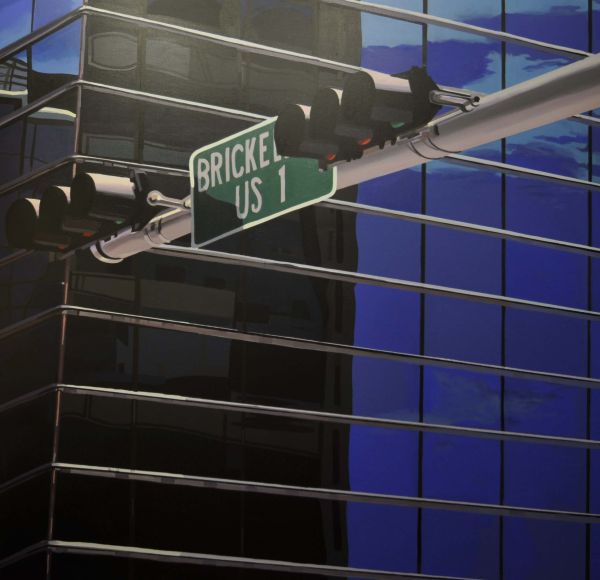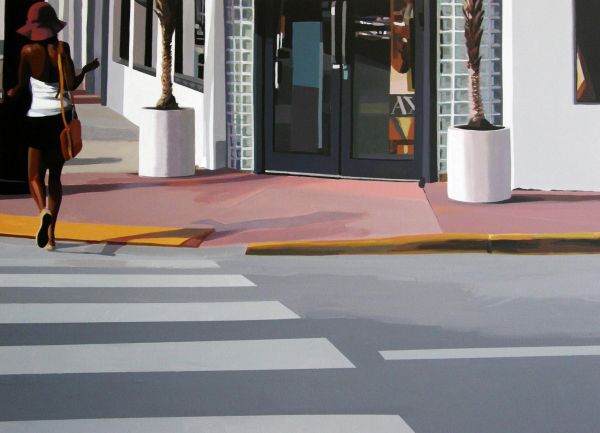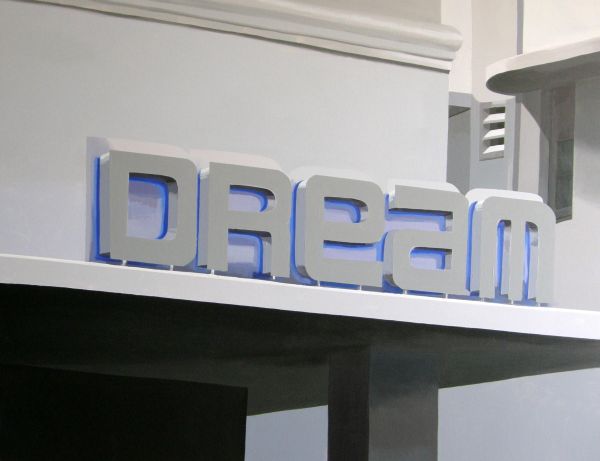Exit
Francisco Solana
Francisco Solana’s paintings (Madrid, 1968) reformulate the point of figurative and poetic mode of capturing reality. His paintings are a detailed performance of the look experience, analyzing the complex field of figurative realism where that “untemporary happiness of vision” mentioned by Aldus Huxley may appear as an aperture of a place to a subjective contemplation in which fantasy and the shapes of recognition intervene. Far from the hegemonic literalism and “hybrid” mode, Francisco Solana manifests a basic confidence in the pictorial power. When ban of painting sounds like a delirious litany, he keeps his figurative passion up without relating it with the hegemonic distorted tradition in modernity. Nor he will justify painting in its mere physical dimension as phenomenological area that carries a nominalist deployment, neither he withdraws into the rhetoric of painting as a “mental thing”, that usually derives into fetishism of the so-called conceptual. Each painter resumes the history of painting in his own way, thereof, Francisco Solana’s work dialogues with crucial moments in History of Art. “To our author, the material – Juan Antonio Fernández Arévalo notices- is deliberately the least. Is precisely the immateriality, with light and color, which gives his paintings a special atmosphere, also a bit unreal and magic. A vaporous light inspired in Flemish and Polish painting –Van Eyck, Vermeer and Rembrandt- or in Leonardo’s “sfumato”, completed by a blended faint gamma, full of subtety and sweetness, and if I am allowed to say: vivid colors as velvet that brightens but doesn’t blind, transmitting serenity, far from de wild fauvism of the beginning of the XX Century and more in the colourist line of the magic realism of Coubet in XIX Century”. If there is an influence that has revealed as decisive in Francisco Solana’s work, is that of Edward Hopper who is, no doubt, a deciding artist in the configuration of the “American view”. Francisco Solana explicitly quotes the “introspective look” of the special melancholy of Hopper, but he mostly takes advance of the metropolitan fragmentation of the details that gives the world a mysterious touch. Although Francisco Solana’s pictorial “frame” is related to the “photographic” referentiality, his imagination has not the will to research about what is happening, but to include a poetic or fictional dimension. He doesn’t pretend to capture reality mechanically, but metaphorically speaking, to sail in order to find another light. From his paintings of nautical yatch races, given a magic atmosphere that takes him beyond the Mediterranean tradition, to the paintings made in Miami, with that luminosity where we can find Hopper so as to the seductive surface of pop, it is noticed the intention to keep the aesthetic illusion. Francisco Solana needs to cover the field, to be there, to catch the shades and find the color of his dreams, swinging from the metaphysical dimension of the painting and the will of creating a place, to explain a territory that attains an imaginary weightiness. Francisco Solana’s work is, in every sense, autobiographical. Although he doesn’t appear on it, he is always painting himself , between the ice of the Artic, and the sunny streets of Miami. He continues with a vital navigation in which he draws a “self-portrait” through the captured details of the world. “The trip as a way and guide of exploration it’s constituted in Francisco Solana’s work, as a model of research and through the study of natural” Versus the tourist’s obsession for his “destination”, the travel Francisco Solana paints is, essentially, a sedimentation of experiences. Francisco Solana goes into the Artic more in depth and stares at metropolitan signs, he captures light in distant regions and, as a last resort, he travels to the inside and tries to account for the individual dimension both of loss and reconquest so as to that one that characterizes the object. Post-romantic sublimity reformulated in Francisco Solana’s painting, has a Hopper tone that consists, not only un the account for the navegatio vital, but also in a time sedimented in the infra-ordinary and the abandonment feeling, the paradoxically fascinating experience of the anodyne. Francisco Solana’s painting is connected to the search for a tune, or better, a vital rhythm: his marines and urban landscapes are dreams, a way to change the true into mystery, he attempts to avoid the fossilization of the imaginary. Francisco Solana is specially attracted by signs, metropolitan writing, the vertigo of the calls of consumer culture. He transforms that business incitements in paintings, and redirects the fierce drive of “idle class” in aesthetic enjoyment. Francisco Solana’s travelling images didn’t emerge from a mere mirror, they are the result of a look that overwhelms reality and pretends to show us that simple poetic exits (as the painting explicitly titled Exit). Art is a strained passion always related to the unexpected and the unprecedented, bended to the search for something of a promise nature of new experiences.









